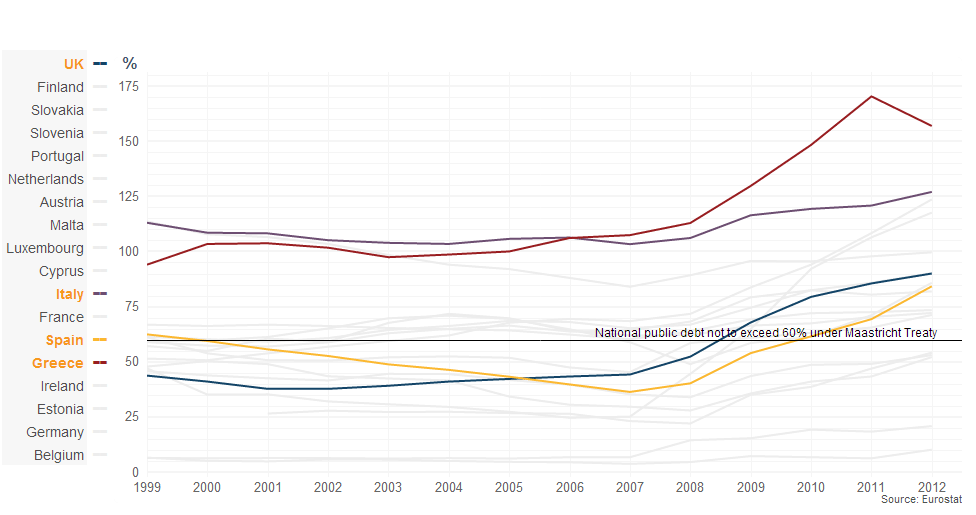EUROZONE DEBT: FULL DATA
It is worth noting that some eurozone members have never met the Maastricht requirement that total debt should be no more than 60% of GDP.
In fact, the requirement was watered down at the inception of the euro in 1999 in order to ensure that Germany would qualify, also letting the heavily-indebted Italian government in as well in the process.
The chart shows that before 2008, the governments of both Ireland and Spain had very modest debts compared with France and Germany.
However, private sector borrowers in those countries - notably property developers and mortgage borrowers - took on unsustainably large debts.
Greece had hidden a lot of its debts before the financial crisis, and since 2008 the government has struggled to bring its overspending under control.
If an economy becomes overburdened by debt and relies on its creditors to keep relending it the money, it risks a sudden loss of confidence, resulting in a refusal by creditors to continue lending.
Inside the eurozone, this risk is heightened by the fact that the European Central Bank is banned by treaty from bailing out governments.
~RS~q~RS~~RS~z~RS~32~RS~)


 HMRC 'failing to check tax reliefs'
HMRC 'failing to check tax reliefs'